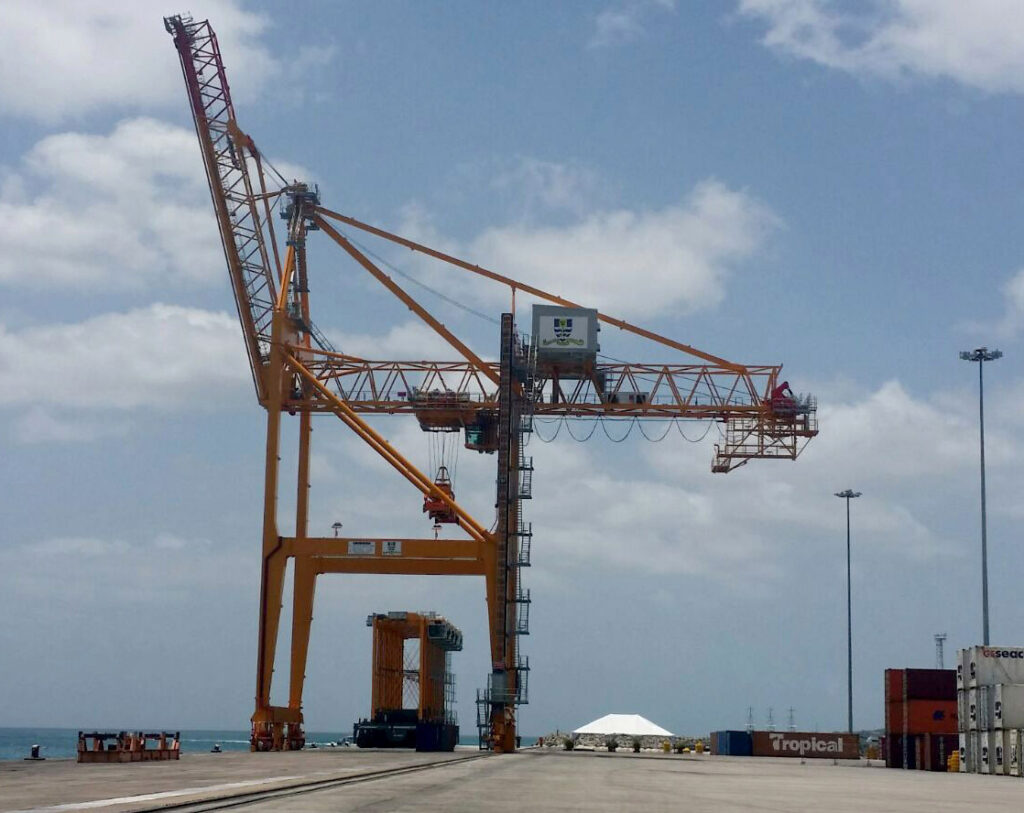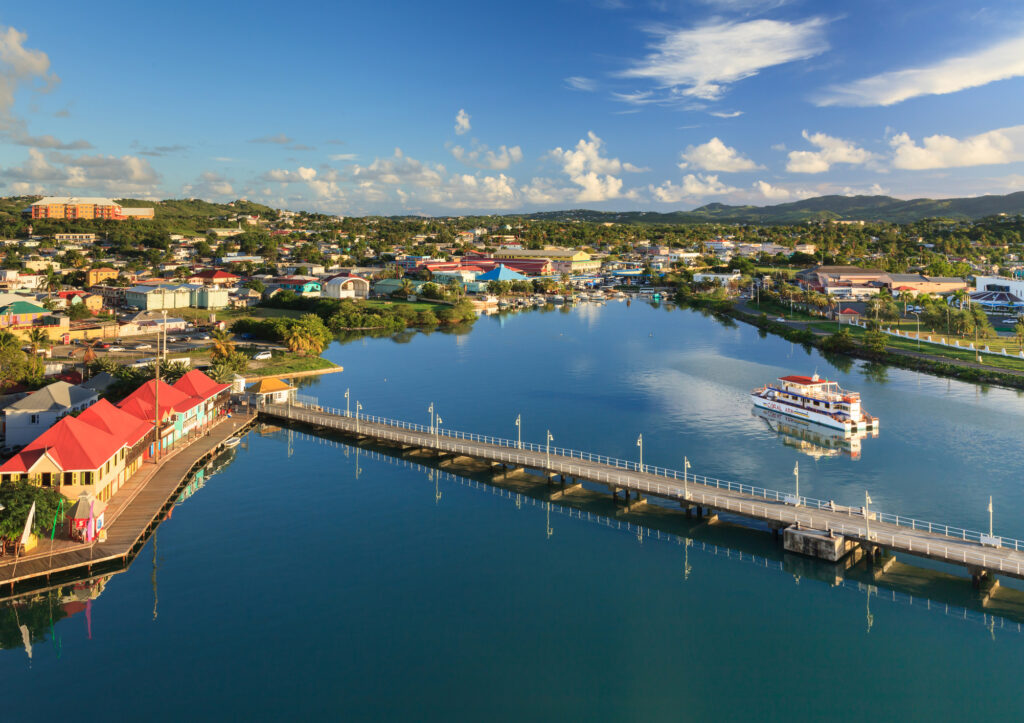Caribbean ports: the quest for sustainability
By Ibrahim Ajagunna and Fritz Pinnock
2017, June 1: The quest for sustainability of Caribbean ports over the last three decades has rested heavily on expansion of infrastructure; investment in port equipment; and, environmental issues.
Global forces of scale and technology and limited capital to invest have impacted these ports over this 30-year period. The need for efficiency and effectiveness to meet new industry demands has however led many Caribbean countries to heavy borrowing or into joint-ventures and partnerships with port developers and other players in the industry. Nevertheless, many Caribbean ports have been slow in adopting and conforming to major impacts including technology and equipment upgrade.
Sustainability
In addressing issues of sustainability, questions arise, including:
- Does port productivity justify investment in new technology and infrastructure, if examined in isolation?
- Is port performance in the Caribbean hampered by a lack of competition because many ports have full monopoly power over cargo movement?
- Does the reluctance of many Caribbean governments to privatize their ports have significant impacts on sustainability?
In the quest for sustainability, these and many other questions should be addressed.
Annual investments by Caribbean ports amount to approximately US$300 million. Financing this level of investment on an on-going basis presents a regional challenge. The overall strategy for improving Caribbean port operations should include legal reforms that encourage competition and regional cooperation. It should also address the need for technical assistance to improve labour and infrastructure efficiency.
 The majority of Caribbean ports face significant obstacles. They must overcome the unfavourable economies of scale that are characteristic of the industry because the present volume of cargo does not, in the short term, appear to justify the large fixed capital cost needed to secure more efficient port operations. One cargo container-handling crane, for example, has a price tag of about US$8million. Costs of administration and support services are also greatly influenced by economy of large scale.
The majority of Caribbean ports face significant obstacles. They must overcome the unfavourable economies of scale that are characteristic of the industry because the present volume of cargo does not, in the short term, appear to justify the large fixed capital cost needed to secure more efficient port operations. One cargo container-handling crane, for example, has a price tag of about US$8million. Costs of administration and support services are also greatly influenced by economy of large scale.
Another challenge is: smaller vessels moving less than container load (LCL) cargo generally serve many of the smaller ports and this directly affects per-unit shipping costs.
Cooperation, coordination
In the quest for sustainability, Caribbean ports need to improve cooperation between port authorities and the shipping companies serving the region.
The establishment of major hubs and spokes could provide benefits for the entire region. In this regard, coordination and cooperation among these ports to facilitate growth in transshipment, where cargo is moved to and from intermediate hub ports on the way to its final destination, should be encouraged.
Transshipment allows the use of larger and more specialized vessels and takes advantage of economies of scale at the major hub ports. Transshipment is extremely attractive to ports because it adds cargo volume to the local trade, making operations that are otherwise uneconomical profitable; and, investment in expensive infrastructure viable. This in turn, leads to direct benefits for local traders and consumers. It increases the number of services that call at the port, while lowering unit costs of merchandise.
Antigua takes bold step
 The government of Antigua recently received kudos in the media for its ” … forward thinking in a transformational rebuilding and redevelopment of the deep water harbour at the Port in St. John’s.” This port upgrade, according to Insight magazine, will further strengthen Antigua’s claim to be a regional commercial and tourism hub and ties in with the investment and growth strategy of the country, enhancing existing strategic positioning. According to the article, this will have significant positive knock-on effects by attracting major developers and investors looking for the best opportunities and return on investment in the Caribbean. Insight states that new innovations and technology have been embraced in the port upgrade that will improve efficiency, safety, the user experience and environmental protection.
The government of Antigua recently received kudos in the media for its ” … forward thinking in a transformational rebuilding and redevelopment of the deep water harbour at the Port in St. John’s.” This port upgrade, according to Insight magazine, will further strengthen Antigua’s claim to be a regional commercial and tourism hub and ties in with the investment and growth strategy of the country, enhancing existing strategic positioning. According to the article, this will have significant positive knock-on effects by attracting major developers and investors looking for the best opportunities and return on investment in the Caribbean. Insight states that new innovations and technology have been embraced in the port upgrade that will improve efficiency, safety, the user experience and environmental protection.
The magazine pointed out that the vision was to leverage the Port’s potential so that it moves beyond simply receiving, storing and distributing cargo but more directly to contribute to social improvement and economic growth. This will also help to improve efficiency and engagement with the private sector to engender increased trust from the shipping lines and to increase economies of scale that will benefit importers in Antigua. This will position the Antigua port as a Specialized Economic Zone (SEZ), serving the entire Eastern Caribbean countries.
Sustainability and port development
With the opening of the new locks at the Panama Canal, many ports in the Caribbean, including cruise terminals, are further expanding their facilities to accommodate larger ships and increased maritime traffic. And, experts have pointed out that the Caribbean is home to 47% of global cruise tonnage. Because of this reality, Caribbean ports have found themselves in a never ending cycle of port expansion to accommodate the latest generation of cruise ships. While governments never recover the capital cost of massive expenditure on cruise terminals, those countries that fail to expand do so at their peril. Unfortunately, many ports have not included sustainability concerns in their expansion and development plans, for example, garbage reception.
Another reality for many countries in the Caribbean is high population density, exacerbated by the large numbers of visitors every year. In some destinations, on a cruise day, the local population may be exceeded by the volume of visitors arriving. In those countries, domestic waste management has been a significant national issue. And the addition of ship waste only serves to place an onerous burden on local waste-management infrastructure, which is already inadequate.
While this has been the case in the Caribbean, environmental sustainability has been a growing concern for port authorities, policy makers, port users and local communities. As a remedy, innovation can provide a solution to the main environmental issues. But such initiatives are sometimes met with resistance by some interest groups. While certain types of technological or organisational innovations can be satisfactorily analysed, in the case of seaports and in particular in the area of environmental sustainability, more advanced conceptual frameworks have to be considered. These frameworks must be able to account for the multiple-stakeholder nature of the port industry and for the network and vertical interactions that environmental sustainability calls for.
Caribbean ports must plan and manage their operations and future expansion in a sustainable way in, order to cope with the limited or decreased environmental space and intensified interactions with their hinterlands. The recognition and accommodation of port development in harmony with the surrounding areas are critical for sustaining the economic value and social benefits provided by the pristine waters of the Caribbean Sea. []
Dr. Ajagunna is Director of Academic Studies, Caribbean Maritime University.
Dr. Pinnock is Executive Director of the Caribbean Maritime University.
Ibrahim Ajagunna






